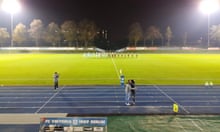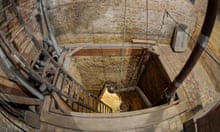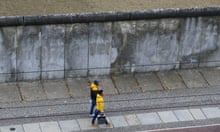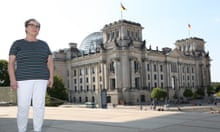Although it’s been almost 30 years since the Berlin Wall fell, traces of the cold-war-era division can still be seen and felt throughout the city. GDR-era architecture and infrastructure is still strewn across the former east (including tourist-friendly districts Mitte, Prenzlauer Berg and Friedrichshain), from the streetlights and high-rise Plattenbauten tower blocks to outsize boulevards, such as Karl-Marx-Allee, and the former Geisterbahnhöfe – the metro network “ghost stations” that were closed during the period of division.
Then there are the demographic divisions. There’s a reason the biggest Turkish communities – and the best kebabs – can be found in former West Berlin districts, such as Neukölln, Kreuzberg and Wedding, while former eastern districts, like Lichtenberg and Marzahn, are known for their Vietnamese communities and restaurants. It is because Gastarbeiter (guest worker) programmes of the 1950s-70s saw West Germany draft in workers from Turkey (among other countries), while the GDR’s equivalent programme drew on imported workers from communist countries allied to the Soviet Union, such as Vietnam.
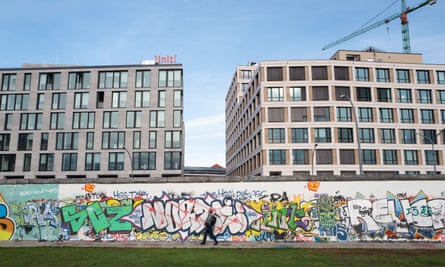
Every five years there is an anniversary to mark the fall of the Wall, though with every passing year the cold-war era of the divided city gets further away. This year is a particular milestone, as on next week’s 30th anniversary (9 November) the Wall will have been down longer than the 28 years it stood. Between 4-11 November, the city will host more than 200 events to “celebrate and remember”, including films and documentaries, photo exhibitions and concerts (including an appearance from Patti Smith), art installations and talks – taking place at Wall-related spots, such as the Brandenburg Gate, Alexanderplatz, and the East Side Gallery.

For those visiting outside these celebrations there are plenty of relevant sights to see, from the well known East Side Gallery, official Mauermuseum and Checkpoint Charlie, to more off-the-beaten-path, poignant locations listed below. For those with a deeper interest, walking or cycling the entire (or at least part of) 160km Mauerweg (Berlin Wall Trail), which follows its route and is studded with memorials, stories and outdoor exhibitions, is highly recommended.
Museumswohnung (Museum Apartment)
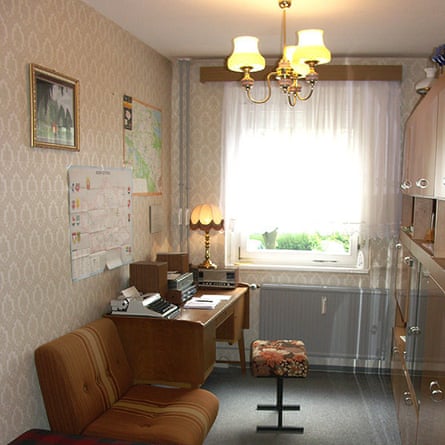
This tiny apartment in the former East Berlin neighbourhood of Hellersdorf has five rooms (living room, bedroom, kitchen, bathroom, study) that have been preserved since GDR times, complete with furnishings (television, hi-fi), knick-knacks (books, vinyl records, typewriter), and even cleaning and kitchen products.
Free, Hellersdorfer Strasse 179, stadtundland.de. Open Sundays 2pm-4pm, by appoitment on +49 (0)151-16114447
Baumhaus an der Mauer (Treehouse at the Wall)
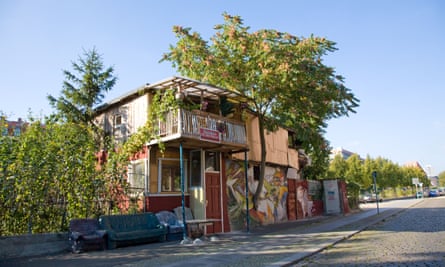
Most visitors wander past this ramshackle summer house and garden without realising its historic significance. Built by the late Osman Kalin, a Turkish migrant living in West Berlin, it was initially founded on a piece of wasteland that officially belonged to East Germany but was accessible from the West due to the GDR not walling it off properly. Kalin cleared and cultivated the area, growing vegetables and flowers right in the shade of the Wall. Despite pressure from both sides, the project has survived and is now run by his son.
Bethaniendamm 23, close to Saint Michael church
Günter Litfin Memorial
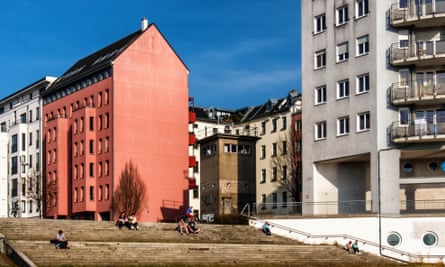
This former GDR watchtower is at the end of a cul-de-sac on Kieler Strasse, next to the Berlin-Spandau ship canal and a cemetery. Surrounded by modern apartment buildings on three sides, today it serves as a memorial to Günter Litfin, who was shot dead close to here while attempting to swim across the canal just 11 days after the Wall went up in 1961. The memorial was inaugurated by Günter’s brother Jürgen, who renovated the long-abandoned tower, and who maintains it to this day. Guided tours are available via the website below.
Kieler Strasse 2, gedenkstaette-guenter-litfin.de. Guided tours April-September (every second Saturday at midday, register in advance via the website), group tours April to October, €3.50pp
Ernst Thälmann Park

One of the last prestigious urban building projects of the GDR, this park was inaugurated in 1986 to commemorate former communist party leader Ernst Thälmann’s 100th birthday. A monumental bust of Thälmann looms at its western edge (on Greifswalder Strasse). Spanning 25 gloriously ungentrified hectares in highly gentrified Prenzlauer Berg, it is home to high-rise apartments, a swimming pool and youth theatre, plus a planetarium that was cutting-edge for its time and is still in use today.
Prenzlauer Berg
Former border crossing at Chausseestrasse
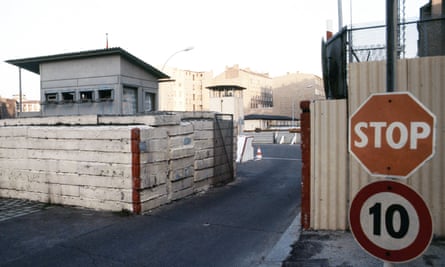
This former checkpoint was the only place where German citizens could enter the GDR by car and is notable mostly for its Total petrol station and a small adjacent park. Look closely, though, and there are tram tracks in the middle of the road, which were rendered defunct when the GDR’s “ghost stations” were reopened. There are also engravings of rabbits on the pavements, created by artist Karla Sachse, a reference to how rabbits were the only creatures that could come and go freely across the Wall without fear of being shot.
Intersection of Chausseestrasse and Liesenstrasse
Parlament der Bäume (Parliament of Trees)
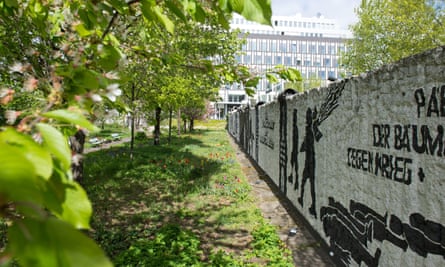
Next to the Marie-Elisabeth-Lüders-Haus, in the centre of the Government Quarter where the border wall once ran, this piece of land was claimed by artist and activist Ben Wagin in 1990. It is used to campaign against all aspects of war and restrictions on personal freedoms and contains an ensemble of memorial stones, graffiti-splattered sections of the Wall and a makeshift exhibition of photos and texts. Wagin can sometimes be found tending to the garden and chatting with visitors.
Adele-Schreiber-Krieger-Strasse, visitberlin.de
Paul Sullivan is a Berlin-based guidebook writer, tour guide and founder of slowtravelberlin.com. He is running tours of Prenzlauer Berg from 4-10 November.
Looking for a holiday with a difference? Browse Guardian Holidays to see a range of fantastic trips

